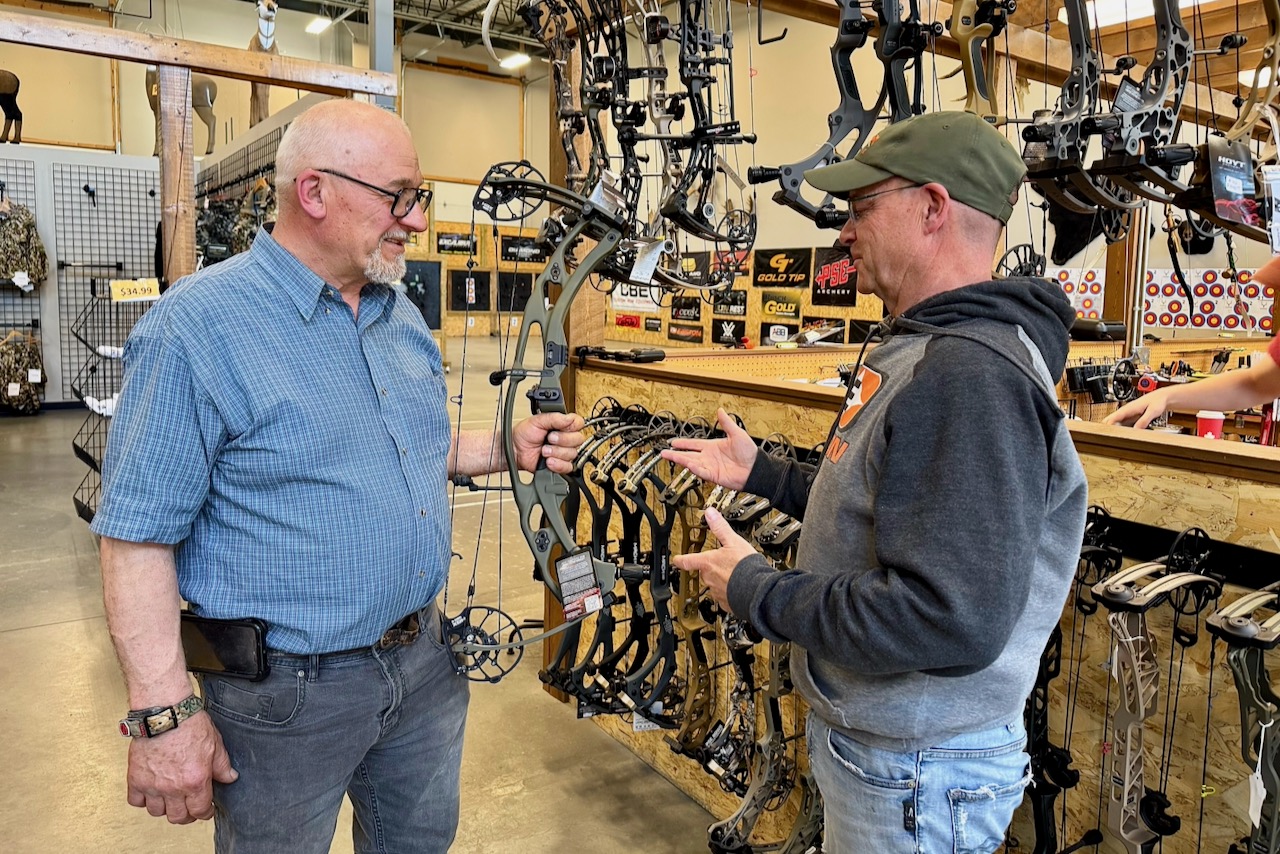BOW BUYS
Planning to buy a new or used bow? Here’s what to keep in mind
Advertisement
Shopping for a bow, whether new or used, can be a daunting task. That’s because there are so many things to consider before making your purchase. From your budget to which brand and model to choose, all are important. To help navigate the process, here are seven key pointers.
#1 CONSULTATION
Advertisement
If you’re a newcomer to bowhunting, talk to experienced archers. Get their input on what they like and don’t like. Remember, though, everyone has his or her own preference. You’ll need to sort out what makes sense for you.
#2 TESTING
Visit your local bow shop and shoot at least 10 arrows out of several different bows. Some makes and models will feel better in your hand. For example, I’ve come to prefer bows from Hoyt. I find they feel natural, and they always shoot well for me.
Advertisement
#3 BUDGETING
At one time, you could hand over $400 for a decent new bow to hunt with, but those days are long gone. Between technological advances and tariffs, bows are getting expensive, but is it really necessary to spend more than $3,000 for a carbon bow? You can, but you don’t have to. For half that price, there are many machined aluminum bows on the market that are great.
Just be aware that it’s a competitive market, so you generally get what you pay for. In the end, quality matters. Higher-end bows tend to outperform, and that often translates to more success in the field. Simply put, buy the best quality bow you can afford.

#4 DRAW LENGTH
Fit is the most important consideration. Many archers are shooting a bow set at a draw length that is too long, or even too short. They may have been set up for a 28-inch draw, for example, but in actual fact they have a 27-inch draw. An incorrect set-up like that causes all kinds of problems and, in turn, inconsistency. Seek help from a qualified bow technician to get properly measured.
Also, remember that longer axle-to-axle bows (34 inches or longer) with longer brace heights (roughly seven inches) tend to be more forgiving. By comparison, short bows in the 30- to 32-inch category, with a shorter riser, tend to demand impeccable form from the shooter to deliver consistent arrows downrange.
#5 DRAW WEIGHT
Far too many archers are drawing more weight than they need to. Most of today’s bows now have 85 per cent let-off, so shooters are willing to struggle with more weight to get more speed. Instead, carefully consider the draw weight you want to pull—you should be able to draw your bow with relative ease, and hold comfortably at full draw for at least a minute.
With today’s limb, cam and arrow shaft technology, stored energy has become ultra-efficient. Unless you are particularly muscular, most men are comfortable shooting 60- to 65-pound draw weights, while most women tend to settle between 45 and 50 pounds.
#6 ACCESSORIES
Beyond the base price of a new bow, plan to spend 30 to 50 per cent more on accessories. At minimum, you’ll need an arrow rest, peep sight and quiver, as well as arrows (field points for practice, and broadheads for hunting). You may also want a stabilizer, side weight, bow stand and kisser button, which is coming back in vogue.
The arrow rest and sight are most critical. While something like an inexpensive Whisker Biscuit rest can work for young kids looking to throw arrows in the backyard, I recommend going with a higher-end fall-away rest. As for choosing a sight, there are in-line pin models, as well as fixed pin, dial-up and pendulum options. Consider the distances you anticipate shooting at. I’m a big fan of hybrid dial-up sights—for distances of 40 to 90 yards—with at least three fixed pins for 20 to 40 yards.
#7 RESALE
Good deals can be had when buying a used bow, but gather as much information as possible about how the bow has been treated. Confirm it has never been dry-fired, and that there’s no damage to the limbs, components, strings or cables, which can make the bow dangerous to shoot. Yes, you can pick up a cheap, decade-old bow, but to take advantage of today’s superior technologies, opt for the newest model you can afford.
